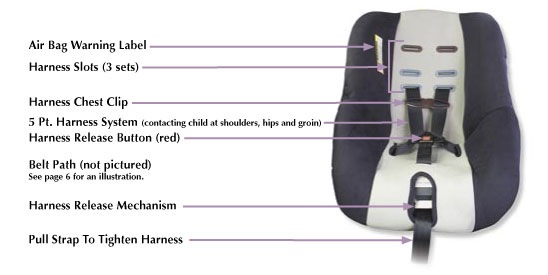Child safety seats (sometimes referred to as an infant safety seat, a child restraint system, a restraint car seat, or ambiguously as car seats) are seats designed specifically to protect children from injury or death during collisions. Automobile manufacturers may integrate child safety seats directly into their vehicle's design. Most commonly, these seats are purchased and installed by consumers. Many regions require children defined by age, weight, and/or height to use a government-approved child safety seat when riding in a vehicle. Child safety seats provide passive restraints and must be properly used to be effective. However, many child safety restraints in countries such as Canada and the United States are not used properly. To tackle this negative trend, Health officials and child safety experts produce child safety videos to teach proper car seat installation to parents and caregivers.

Baby car seats are legally required in many countries, including the United States, to safely transport children up to the age of 2 or more years in cars and other vehicles.
Other car seats, also known as "booster seats," are required up to the age of 9 or a weight of 90 pounds.
Generally, countries that regulate passenger safety have child safety laws that require a child to be restrained appropriately depending on their age and weight. These regulations and standards are often minimums, and with each graduation to the next kind of safety seat, there is a step down in the amount of protection a child has in a collision.Some countries, such as Australia and the United States, forbid rear-facing child seats in a front seat that has an airbag. A rear-facing infant restraint put in the front seat of a vehicle places an infant's head close to the airbag, which can cause severe head injuries or death if the airbag deploys. Some modern cars include a switch to disable the front passenger airbag for child-supporting seat use.
In 2003, the American Academy of Pediatrics (AAP) suggested that infants "should spend minimal time in car seats (when not a passenger in a vehicle) or other seating that maintains supine positioning" to avoid developing positional plagiocephaly ("flat head syndrome").
In 1990, the ISO standard ISOFIX[5] was launched in an attempt to provide a standard for fixing car seats into different makes of car. The standard now includes a top tether; the U.S. version of this system is called LATCH. Generally, the ISOFIX system can be used with Groups 0, 0+ and 1.





